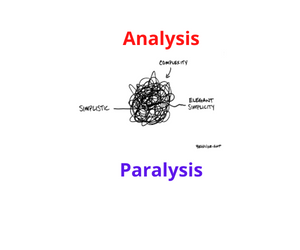Enough of travel and back to the daily business of controlling the days events. In past Blog posts Ihave written about the difference between Control Reports and Reference reports. This is all about Control reports, which means specifically ones that should show you exceptions. if there are breaks or differences, then your report or screen will have some items for you to look at.
Now, what about if there are no exceptions today? What do you see? This is an important question. Recently, I was looking at a process with a CCP. Standard procedure was to check report xy something or other for the details of a margin call. I asked what happened when there was no call? “There is no report,” I was told. I asked how we would know if there was no report whether there was indeed no activity or whether there was a system error. I received a rather stunned look. Various suggestions were offered: there were other reports to look at, or I could wait to see if the call failed or call client services. Every single suggestion would have turned a 30 second task into one taking multiple minutes. I would have had to piece together various bits of information like a mosaic. Horrid idea.
With control reports it may well be the case that for a particular check on a particular day there are no exceptions or items to manage. “Nothing to report”, as it were, and a good day that would be too. In order to make it a “reassuringly boring” day, you need something to re-assure you. If there is no report, because there is nothing to report, you will not know if the lack of output is down to the fact that there is nothing or to an error. Assuming that no news is good news would be a dangerous assumption. You need to design the process to send you a very clear message when there is what is sometimes referred to as a “nil return”. Go on, waste that one sheet of paper each day.
“Report ready flag”: Any process you are trying to automate that needs input from another source will benefit from being able to look out for a flag that says “today’s data is now available” or “latest data available”. This enables your IT processes to set a timed process that starts to look for the file when it is due and escalates if nothing is found in time. I think “chron’ job” is the techie vernacular. The best example of this I have seen is around CLS Bank in FX processing. The most important moment in the “CLS day” is 06:30 CET; the doors close for settlement that day, net numbers per currency are determined and the payment schedule is then made available. At that moment a flag is set to say “payment schedule available”. IT processes can check , or as our techie friends would put it “poll”, for the flag and then either read the file or escalate if the flag is not set in time. The output file contains a number per currency, so the member can be sure whether it is paying or receiving. As soon as the flag is set, the files are snapped, and converted to payments. No human hand is involved. Just human supervision. Simples.
Lessons Learned: Ensuring your exception process does a visible “nil return”is a good control process. It means your team can perform the check quickly and there is less chance for them to slip into “no news is good news” thinking.
A personal request: The book of the Blog is in the works. Your support would be appreciated on two fronts:
- Please subscribe, if you don’t already.
- Please share this with a friend or two and ask them to subscribe too.
If the comments are wide of the mark and not offering anything of use, please comment or make contact directly via E-Mail.
Share on:



